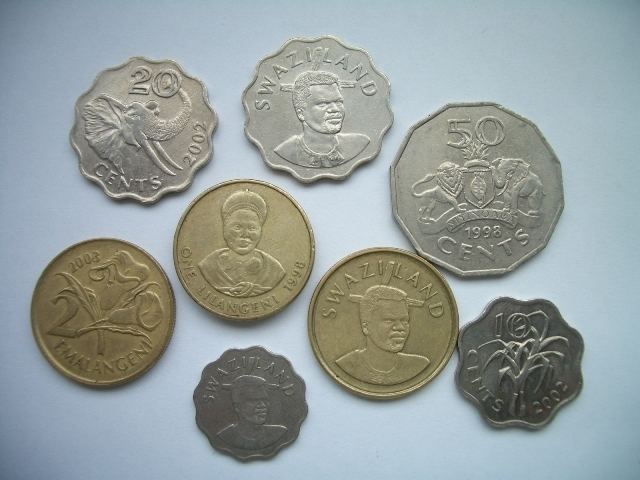Code SZL Plural emalangeni | Symbol L or E (pl.) | |
 | ||
Banknotes E10, E20, E50, E100, E200 Coins 1, 2, 5, 10, 20, 50 cents, L1, E2, E5 | ||
The lilangeni (plural: emalangeni, ISO 4217 code: SZL) is the currency of Swaziland and is subdivided into 100 cents. It is issued by the Central Bank of Swaziland (in swazi Umntsholi Wemaswati). The South African rand is also accepted in Swaziland. Similar to the Lesotho loti, there are singular and plural abbreviations, namely L and E, so where one might have an amount L1, it would be E2, E3, or E4.
Contents
History
It was introduced in 1974 at par with the South African rand through the Common Monetary Area, to which it remains tied at a one-to-one exchange rate.
Coins
In 1974, coins for 1, 2, 5, 10, 20 and 50 cents and 1 lilangeni were introduced, with the 1 and 2 cents struck in bronze and the others struck in cupro-nickel. Except for the 1 lilangeni, the coins were not round, with the 1 and 50 cents dodecagonal, the 2 cents square with rounded corners and the 5, 10 and 20 cents scalloped.
The 2 cents was last struck in 1982, whilst, in 1986, round, copper-plated steel 1 cent and nickel-brass 1 lilangeni coins were introduced. These were followed, in 1992, by nickel-plated-steel 5 and 10 cents and nickel-brass-plated-steel 1 lilangeni coins. In 1995, 2 and 5 emalangeni coins were introduced.
The nickel-brass L1 coins have exactly the same dimensions and composition as the British £1 coins introduced three years earlier. As 1 lilangeni is worth about £0.05 (2015), the Swazi coins are sometimes used fraudulently in British vending machines.
